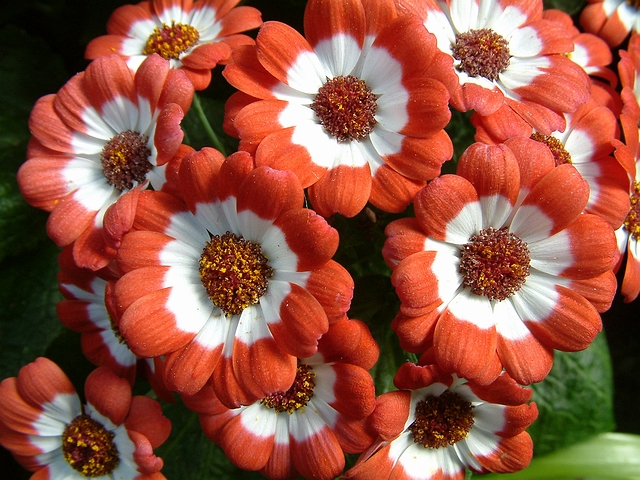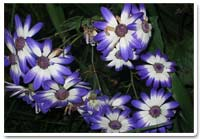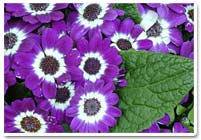
Cineraria
Compositae is the largest family of vivacious flowering plants. This enlarged family contains about seven hundred and sixty genera and more than over ten thousand species, enveloping almost about one-tenth of all the flowering forms one can find. Goldenrod, sunflower, aster, chrysanthemum, thistle, lettuce and dandelion are some of the prominent members of this family. All the species are widespread in the entire world and have adapted to the varied climatic conditions such as temperate, hot climates, rainy forests and so on.
Each plant of this vast family is enamored with certain qualities which are not only magnificent but also miraculous in many ways. Cineraria is one such genus which includes more than 50 species of flowering plants. A Native to Southern regions of Africa.
Cineraria cruenta bears flowers which are extremely beautiful and attractive in every sense. Cineraria can also be seen in the southern Europe and Asia.
The exuberant and bright colored flowers make Cineraria a gifted flowering plant. The bright colors might range from white, pink, purple, red or blue and usually a white ring in the middle of the flower adds to the vivacity of this flower. The dark green leaves cover the entire stem below the flowers bunch and these leaves are roughly shaped as a sharpened arrow. The flowers are an amazing display of flowering petals arranged in peculiar yet attractive form.
Herbaceous in nature, Cinerarias can be widely cultivated as garden plants in the temperate regions. Moreover Cinerarias can hardly withstand any kind of extreme climates. It is best to plant this flower in moderate conditions as excessive cold, frosty conditions or elongated sunshine period may prove to be fatal for its growth.
Uses
A perfect ornamental that will enhance the beauty of any garden in every possible way
An ideal bed of flowers, Cinerarias can be used to edge or border the garden along with other desirable flowers
The cut flowers make up for a beautiful and magnificent bouquets and other ornamental usages at home
The adorable and perfumed aroma of the flowers make these flowers an experimental flower for the perfumists as well
The plant can be cultivated in pots and be decorated as an indoor plant
The annual plants with rich clusters of bright flowers performs great as a decorative plant.
There has been an increase in the number of varieties of Cineraria due to the introduction of different hybrids as well. These hybrids are endowed with rich colors and a variety of well blended colors which have proved to be enormously beautiful and attractive. The numerous varieties vary from white to pinkish-purple and other different shades of dark bluish-purple colors. These vary in size as well. today we can find dwarf varieties as well as those which grow longer with larger flowers. All these have accolades worldwide and have gained themselves a special place in the hearts of flower lovers.
Treasure your garden with Cineraria
Easy to plant, Cineraria provides you with a refreshing look of your garden. The flowers are wrapped up in a variety of colors and make the scenery a delight for the eyes. A few tips to follow if you are thinking to acquire a garden of Cineraria:
The most preferred and suitable methods to propagate Cineraria are seeding and offsets.
It is a wrong assumption that Cineraria can tolerate all climatic conditions. Extremes are extremely intolerable for these tender plants.
Cooler environments support the growth of Cineraria but frost kills the delicate flower.
Sunlight is needed but preferably it should be shady sunlight. make sure that harsh sun rays do not reach your healthy plant.
Watering in balanced quantities is the best method to keep away rusty mildew and other complications. Moist conditions help the plant shoot up like anything and well drained soils are the first step towards the perfect growth.
Enrich the soils with enough compost and mulch in a well blended mixture in the soils to provide the plant all essential nutrients needed from the soil.
Timely applications of insecticides and pesticides help the plant fight away unwanted insects and plant-lices.


